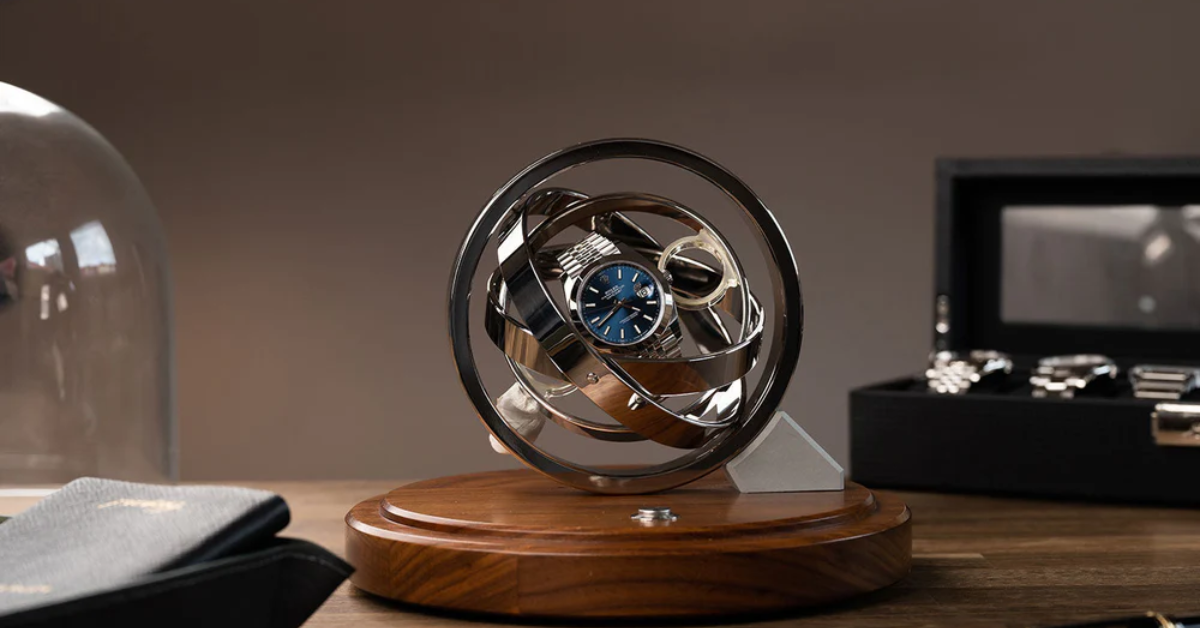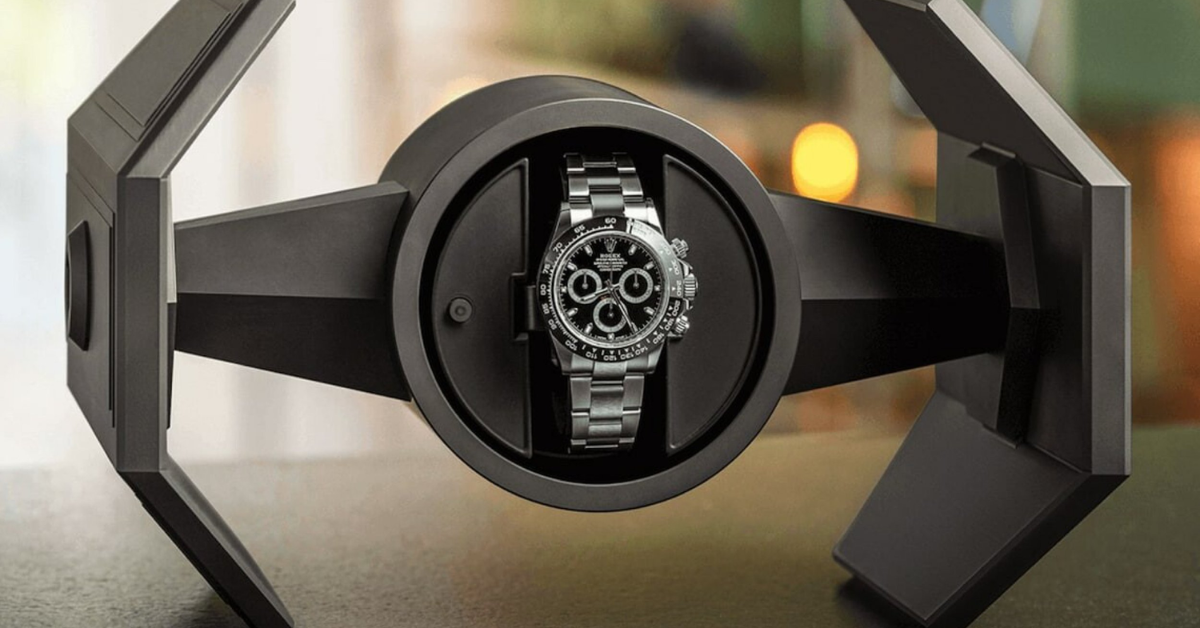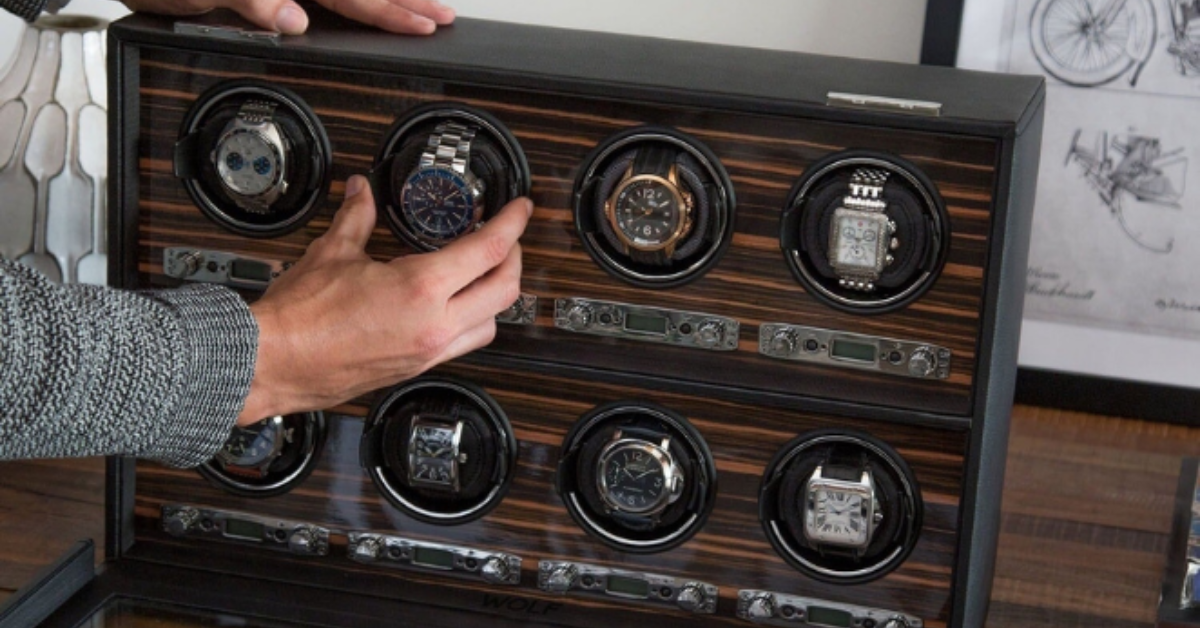
The Importance of Rotation Settings for Automatic Watches
Introduction
Automatic watches are marvels of engineering, designed to keep time using the natural motion of the wrist. However, when left unworn for extended periods, they stop running and require resetting. A watch winder solves this issue by keeping the watch in motion, ensuring that it remains wound and ready to wear.
However, not all automatic watches are the same. Different watch movements require specific rotation settings, including the number of Turns Per Day (TPD) and the direction of rotation. Using incorrect settings can lead to inefficient winding, power reserve issues, or unnecessary wear on the movement.
In this guide, we’ll explore why rotation settings matter, how to determine the right settings for your watch, and how to choose a watch winder that meets your needs.
1. Why Rotation Settings Matter for Automatic Watches
A watch winder's primary function is to simulate natural wrist movement to keep a watch powered. However, different watches require different winding directions and rotation speeds to function optimally.
How Rotation Settings Impact Watch Performance
- Ensures proper power reserve levels – Prevents watches from running out of power while unworn.
- Prevents overwinding or underwinding – Reduces unnecessary stress on the movement.
- Maintains movement efficiency – Ensures the escapement and rotor operate as intended.
- Preserves lubrication inside the movement – Keeps the internal oils evenly distributed to reduce friction and wear.
If a watch winder does not have the correct TPD or rotation direction, it may fail to wind the watch properly or, in extreme cases, cause excessive wear.
2. Understanding Turns Per Day (TPD) Settings
What Is TPD?
Turns Per Day (TPD) refers to the number of complete revolutions a watch winder makes in a 24-hour period. Each watch movement has a specific TPD requirement to ensure optimal performance.
Common TPD Ranges by Watch Brand
- Rolex – 650-800 TPD
- Omega – 650-900 TPD
- Patek Philippe – 600-800 TPD
- Audemars Piguet – 650-850 TPD
- IWC – 800-1000 TPD
- Tag Heuer – 650-850 TPD
- Breitling – 650-800 TPD
Using a watch winder with adjustable TPD settings ensures that each watch receives the precise number of rotations it needs.
What Happens if TPD is Too Low or Too High?
- Too Low – The watch does not receive enough winding, leading to power reserve depletion.
- Too High – Excessive rotations may put unnecessary strain on the rotor and automatic movement, accelerating wear.
A high-quality watch winder with programmable TPD settings ensures your watch remains wound without excessive or insufficient movement.
3. Choosing the Correct Rotation Direction
Types of Rotation Settings
- Clockwise (CW) – Some watches only wind efficiently in one direction.
- Counterclockwise (CCW) – Other watches may require the opposite direction.
- Bi-Directional – Many modern automatic watches wind in both directions, making bi-directional settings the most efficient option.
How to Find Your Watch’s Rotation Requirements
To determine the correct winding direction:
- Check the manufacturer’s specifications – Most luxury brands list TPD and rotation preferences in the user manual.
- Visit the brand’s website – Many brands provide official guidance for watch winders.
- Test it manually – If unsure, set the winder to bi-directional mode to cover both directions.
Common Rotation Settings for Luxury Watches
- Rolex – Bi-Directional
- Omega – Bi-Directional
- Patek Philippe – Clockwise
- Audemars Piguet – Bi-Directional
- IWC – Counterclockwise
- Tag Heuer – Bi-Directional
- Breitling – Bi-Directional
A programmable watch winder allows collectors to fine-tune the direction and TPD settings to match their watch’s specifications.
4. Advanced Winding Features to Look For
Pre-Programmed Winding Cycles
Premium watch winders offer preset winding cycles that include:
- Intermittent rotation – Mimics natural wrist movement by pausing between winding cycles.
- Sleep mode – Stops winding for a set period to simulate daily wear.
- Variable speed control – Allows customization based on different watch brands.
Silent, Energy-Efficient Motors
A high-quality motor ensures:
- Smooth and quiet operation
- Minimal vibration, preventing excessive movement wear
- Energy efficiency, reducing unnecessary power consumption
Multiple Watch Programming
For collectors with multiple automatic watches, a multi-watch winder with individual rotation settings per watch ensures each timepiece is wound according to its unique movement requirements.
5. How to Choose the Right Watch Winder for Your Collection
When selecting a watch winder, look for the following features:
- Adjustable TPD settings (600-1,200 TPD) – Ensures compatibility with a variety of watches.
- Multiple rotation modes (CW, CCW, Bi-Directional) – Accommodates different winding requirements.
- Silent motor technology – Prevents distracting noise in bedrooms or offices.
- Premium materials (wood, carbon fiber, leather) – Enhances durability and luxury appeal.
- LED touch display & app connectivity – Offers precision control and monitoring.
- Secure lockable case – Protects valuable timepieces from unauthorized access.
Best Chronos 1907 Watch Winders for Precision Winding
At Chronos 1907, we design luxury watch winders that provide precise control, silent operation, and premium craftsmanship to ensure your automatic watches receive the best care.
1. Chronos 1907 Prestige Single Watch Winder
- Adjustable TPD (600-1,200) with Bi-Directional Rotation
- Ultra-quiet motor for noise-free operation
- Handcrafted wooden or carbon fiber finish
- Soft suede interior to prevent scratches
- Dual power source: AC adapter + battery
 Best for: Watch owners who need a premium single-watch winder with full customization options.
Best for: Watch owners who need a premium single-watch winder with full customization options.
2. Chronos 1907 Multi-Watch Winder
- Holds multiple watches with independent TPD and rotation settings
- Premium materials such as carbon fiber, polished wood, and leather
- Touchscreen controls with LED lighting for enhanced visibility
- Silent motor technology for smooth, vibration-free operation
- Lockable glass display case for security
 Best for: Collectors with multiple automatic watches requiring individual winding settings.
Best for: Collectors with multiple automatic watches requiring individual winding settings.
Final Thoughts: Precision Winding for Luxury Watches
Proper rotation settings are essential for keeping automatic watches running smoothly, ensuring longevity, and preventing unnecessary wear.
Key Takeaways
- Correct TPD settings prevent underwinding and overwinding.
- Choosing the right rotation direction ensures efficient winding.
- Customizable winders allow precision control for each watch.
- Silent motors and premium materials enhance performance and luxury.
At Chronos 1907, we combine precision engineering and luxury craftsmanship to create the perfect watch winders for serious collectors.


















